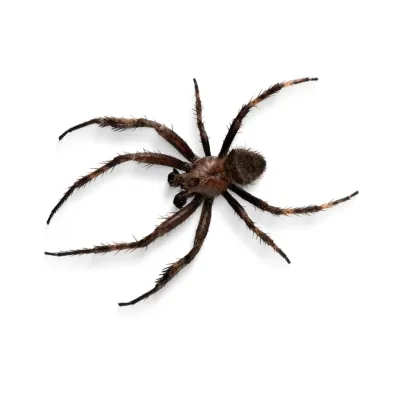
Arachnids
2 mm to 90 mm (varies widely by species)
Eight legs, typically two body segments (cephalothorax and abdomen), varying colors and patterns depending on species.
8
No
None
Found indoors in dark, undisturbed areas such as basements, attics, and closets. Outdoors, spiders build webs in sheltered spots, like eaves, trees, and bushes, to catch prey.
Spiders are arachnids commonly found worldwide, known for their distinctive webs and wide variety of species.
While most spiders are harmless to humans, some can deliver painful or medically significant bites.
Spiders primarily feed on insects, making them beneficial in pest control, but their webs and presence can be unsettling for many people.
Spiders vary greatly in appearance, but all have eight legs and two main body segments.
They lack wings and antennae and may come in various colors and sizes.
Common household spiders include the American house spider, wolf spider, and brown recluse.
Some species, like the black widow and brown recluse, are venomous and can pose health risks if disturbed.
Spiders are typically found in undisturbed areas both indoors and outdoors. Indoors, they prefer basements, attics, and garages, building webs in corners and other sheltered spaces.
Outdoors, they make webs in areas like bushes, trees, and eaves. Spiders are mostly nocturnal, hunting for prey at night. They are attracted to areas with high insect activity, as insects serve as their primary food source.
While most spiders are harmless, some species, such as the black widow and brown recluse, have venomous bites that can cause significant health issues.
Bites from these spiders may lead to pain, nausea, and, in severe cases, require medical attention.
Additionally, spider webs can create an unsightly appearance in homes and may require regular cleaning.
Our support team is here and ready to assist with any questions or to schedule a pest control service whenever it’s convenient for you.